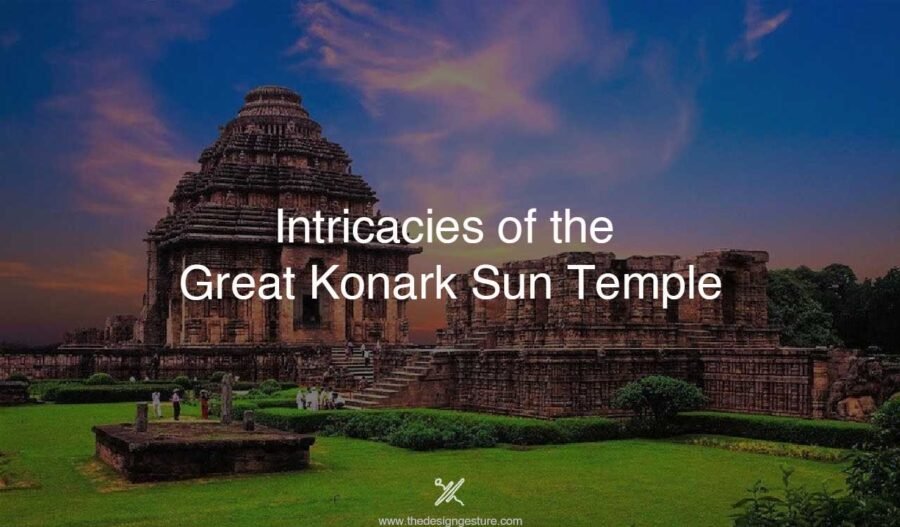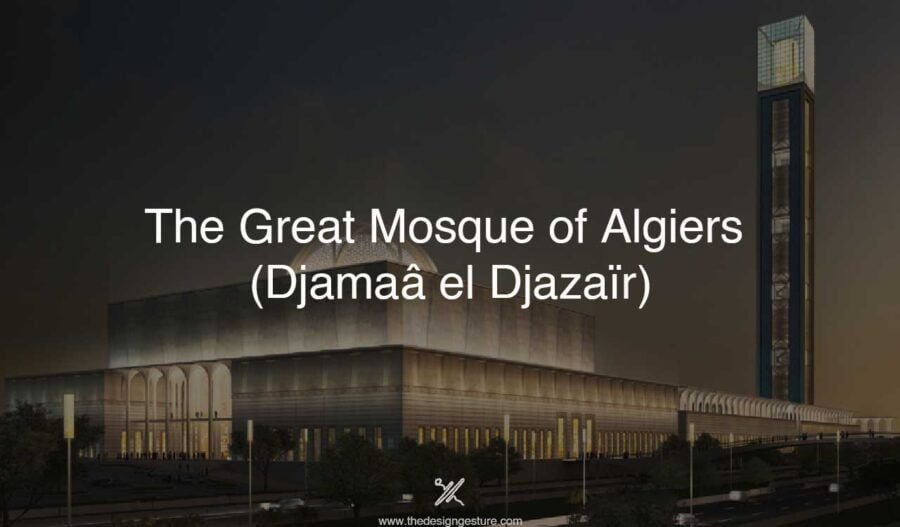Konark Sun Temple, also known as Black Pagoda, Arka Khetra, Padma Khetra or simply Konark, found on the Eastern coast of Odisha is a renowned UNESCO World Heritage Site, an architectural marvel; a temple dedicated to the Sun God embodying intricate sculptural work and a scenic tourist spot. Dissecting the word Konark, it is an amalgamation of two words; Kona, meaning ‘Sun’ and Arka meaning ‘Corner’, translating Konark as ‘Sun of the Corner’. This splendid shrine dedicated to the Sun God is situated in the Northeast corner of Puri, Odisha, earning its name as Konark or Arka Khetra. This article delves into the architectural intricacies and sculptural masterpieces of the Sun Temple in Odisha.
Table of Contents
Konark Sun Temple History
Konark Sun Temple history is deeply intertwined with the history and political dynamics of the area, as well as its religious stories and beliefs. Konark Sun Temple was built by King Narasimhadeva I, the great ruler of the Ganga dynasty in the mid-13th century in Odisha to commemorate his triumph in the Battle of Katasin in which he fought against the Mamluk dynasty governor of Delhi, Tughral Tughan Khan in 1243 AD. This magnificent temple with meticulous detail and intricate carving raised from the ground as not only a chariot for the Sun God, whom the King worshipped, but also as a victory memorial.
The Konark Sun Temple history is an abridged account without the mention of the architect and sculptors without whose efforts and expertise the temple would have remained just a concept. Over 1000 artisans, besides the chief architect Bishu Maharana and his son Dharmapada, worked over a period of 12 years from 1243 AD to 1255 AD in successfully constructing and carving the temple.
The geography of the temple surroundings was different in the past when King Narasimhadeva I chose the location for constructing the temple. The temple was constructed in proximity to the River Chandrabhaga within a mile to the North of the temple, on the Bay of Bengal coast in the past. The river banks thrived as flourishing towns and trade centers while the river itself was a remarkable means of communication and transportation earlier.
However, with time the sea receded, the river Chandrabhaga dried up, and the temple was pushed inland. Further, in 2016, IIT Kharagpur researchers identified a paleochannel (remains of a dried river channel) of a river in the north of the temple using ground penetrating radar testifying to the presence of dried-up river Chandrabhaga near the temple. The river played a crucial role in the building of the temple by facilitating the transportation of materials besides holding great religious importance. It is found that Chlorite from Nilgiri hills and soft sandstone from Siddhadurga used in constructing the temple were transported via the Chandrabhaga river channel.
Konark Sun Temple, its Religious Significance
It was the holiness and the religious legends associated with the site and the river Chandrabhaga that facilitated the construction of the sun temple in Konark, near river Chandrabhaga. According to legend, Samba, the son of Lord Krishna, was cured of leprosy after worshipping the Sun God. After the Sun God appeared before him, he was blessed with a picture of the Sun God which he obtained from the river Chandrabhaga which he installed in a temple built by him in his hermitage. Many legends emphasize the sacredness of River Chandrabhaga and the area around it, influencing the decision to construct the Sun Temple in that particular location.
Even the etymology of the Konark Sun Temple also corresponds to its religious significance, besides its architecture. Mythological narratives highlight Konark as one out of the four khetras , meaning regions, in Odisha where Lord Vishnu buried his Lotus, locally known as Padma, after eliminating the demon named Gyasur. Hence, Konark Sun Temple is also known as Padma Khetra.
Architectural Review of the Konark Sun Temple
Sun Temple Konark architecture is a prime example of the Kalinga style. Kalinga style comes under the Nagara style of architecture which was actually popular in the Northern parts of India, however, the Kalinga style was mainly found in the Kalinga region, that is present-day Odisha, West Bengal, and Andhra Pradesh. The temple follows the pancha ratha dekha deul style, a sub-style of the Kalinga style.
According to the pancha ratha dekha deul style, each facade of the temple tower or shikhara is divided into five small projections in an attempt to play with light and shadow effects and introduce verticality, continuous vertical lines or rekha in the temple design. If there are five projections, it is a pancha ratha style but if there are three, seven or nine projections it is tri ratha, saptha ratha or nava ratha style respectively. Konark Sun temple is of pancha ratha style.
Analyzing the spatial components, the temple housed the main sanctum topped by a Vimana or Shikhara or Deula where the main deity was located, the Jagamohana hall in front of the vimana, and the Nirtya-mandapa, or the hall for cultural activities and arati-nrityas, dance performances. The Jagamohana, or Mukhasala, or the assembly hall, is at the same plinth level as the main sanctum. The roof of the Jagamohana takes a pyramidal form of accentuated recesses between the cornices dividing the pyramid into three tiers. The Nirtya-mandapa is a pillared hall similar to Jagamohana, however built on a higher plinth level than the main sanctum and Jagamohana.
Besides the style of the Sun Temple Konark architecture, its architecture was dictated by its religious significance and the conceptualization of the temple itself as a chariot for the Sun God. According to the Hindu texts and scriptures, the Sun God was identified as a radiating figure holding a lotus flower in each of his hands, accompanied by Goddesses Usha and Pratyusha traversing the sky in a chariot rising from the east, drawn by seven horses namely Gayatri, Brihati, Ushnih, Jagati, Trishtubha, Anushtubha and Pankti guided by his Charioteer Aruna.
Konark Temple was designed to depict this scene as an intensively carved and decorated stone chariot mounted on 24 wheels also known as the Konark Great Wheels, drawn by 7 mighty horses in front of which a pillar named Aruna Stambha stood representing Aruna, the Sun God’s charioteer.
Knowing the Konark Sun Temple Sculptures
Konark sun temple sculptures embellish the temple walls, door lintels, door frames, and pillars of the temple halls. Along the lowest band of the temple walls and plinth slab, over a thousand elephant sculptures are carved in different poses smaller than the sculptures that adorn the middle and upper sections of the temple walls.
Moving on to the intermediate section on the walls, above the elephant sculptures, mystic figures like the Gajasardula (a lion upon an elephant), the Naravyala (a lion upon a man), and the Nagamithunas (a human head and serpent tail) can be found. In the upper section, the sculptures are larger and usually seductive. The pillars and walls of the Nrithya-mandapa were decorated with carved sculptures of dancing figures in various poses and holding lamps, musical instruments, and incense burners depicting the nritya-aarti.
Apart from the sculptures carved on the walls, the free-standing sculptures further enrich the magnificent beauty of the temple. Gajasimha (a lion on an elephant), war horses, seven pulling horses, the chariot wheels or the Konark Great Wheel on the temple walls, and war elephants, all belong to this category of free-standing large sculptures in the Konark Sun Temple. In honor of the Odia warriors of the past, the Odian Government came forth to use one of the war horses as their state emblem in 1964.
Demonstrating the Rich Culture, Knowledge, Expertise, and Prosperity of the Past
The Konark Sun Temple is substantial of the prosperous past of 13th century Odisha, the expertise and knowledge of the craftsmen, architects, and engineers of that period, and a rich culture. From Konark Great wheels that can act as sundials to the floating idol of the presiding deity, all are architectural and engineering marvels within this temple complex. The intricacy of the sculptures is undebatable and portrays not only local cultures but also African and Chinese cultures highlighting the rich maritime and international trade history of Kalinga.
Unfortunately, this marvel has lost its original state, including a few free-standing sculptures of horses, and lions, the roof of the main sanctum, the Arjuna pillar, and the roof of the Nritya-mandapa. It is the responsibility of every citizen to preserve this monument and cooperate with the government’s efforts to preserve this splendid sculptural architectural edifice.
FAQ
- Who built the Konark sun temple?
The Konark Sun Temple was built by King Narasimhadeva I of the Eastern Ganga dynasty. Bishu Maharana was the chief architect of the temple and Sibei Samantaraya Mahapatra was in charge of the construction of the temple. Dharmapada, the son of the chief architect, played an important role in the completion of the temple construction and sacrificed his life in the process.
- When can the people visit the Konark sun temple?
The temple is open from 6:00 am to 8:00 pm every day and as the temple is not functional everybody is allowed.
- How to obtain the entry tickets?
The tickets can be booked online at https://asi.payumoney.com/quick/stk .
- Are there any regulations for photography within the temple complex?
Camera is allowed within the temple and non-commercial photography is free.




